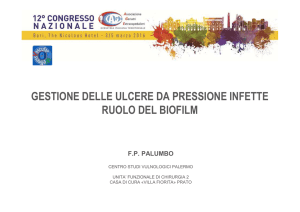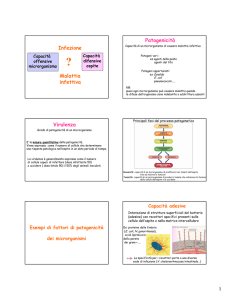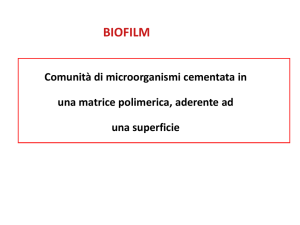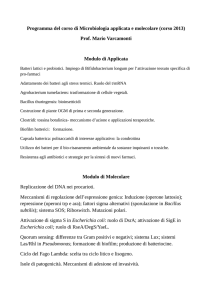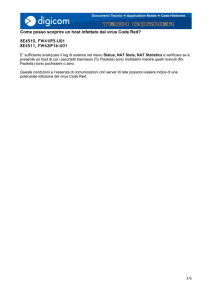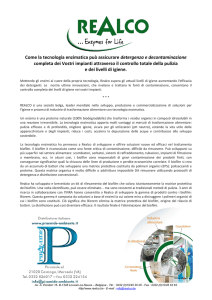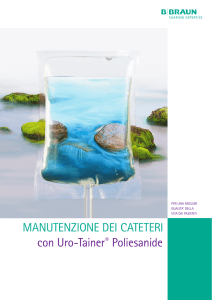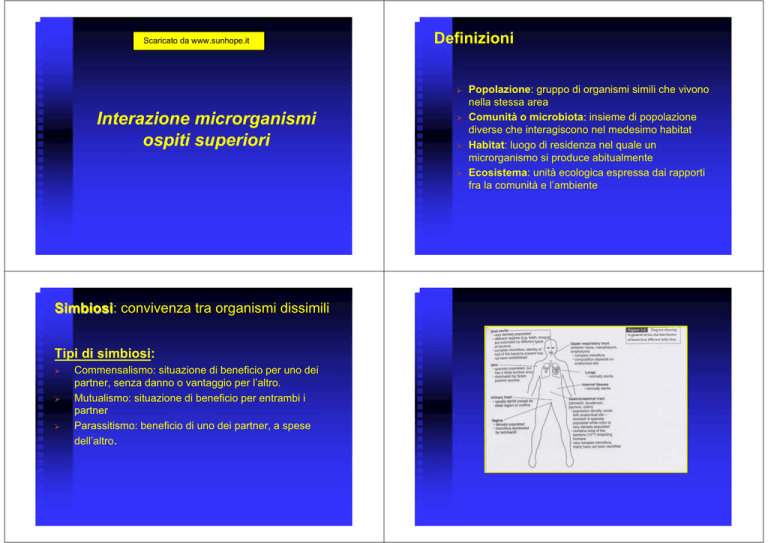
Scaricato da www.sunhope.it
Definizioni
¾
Interazione microrganismi
ospiti superiori
¾
¾
¾
Simbiosi:
Simbiosi convivenza tra organismi dissimili
Tipi di simbiosi:
¾
¾
¾
Commensalismo: situazione di beneficio per uno dei
partner, senza danno o vantaggio per l’altro.
Mutualismo: situazione di beneficio per entrambi i
partner
Parassitismo: beneficio di uno dei partner, a spese
dell’altro.
Popolazione: gruppo di organismi simili che vivono
nella stessa area
Comunità o microbiota:: insieme di popolazione
diverse che interagiscono nel medesimo habitat
Habitat: luogo di residenza nel quale un
microrganismo si produce abitualmente
Ecosistema: unità ecologica espressa dai rapporti
fra la comunità e l’ambiente
CONTATTO
COLONIZZAZIONE
INTERAZIONE CON FAGOCITI
DIFFUSIONE
Virulenza
Patogenicita’
Contaminazione
Colonizzazione
Infezione
Malattia
Epidemologia
PENETRAZIONE
EVASIONE DELLE DIFESE IMMUNITARIE
RILASCIO DI PRODOTTI ESO ED ENDOCELLULARI
INCUBAZIONE
FULMINANTI, ACUTE, CRONICHE
Malattie Da Infezione
LOCALI –SISTEMICHE
BATTERIEMIA
SEPSI
VIREMIA, ETC.
PRIMARIE – SECONDARIE
ESOGENE - ENDOGENE
Patogeni Condizionati
Trasmissione degli agenti infettivi
TRASMISSIONE
DIRETTA
Contatto diretto cutaneo – mucoso
•
Infez. cutanee da cocchi gram-positivi
•
Infez. Sessuali
•
Infez. Attraverso il canale del parto
Contatto attraverso secrezioni respiratorie (tosse, starnuti, etc.)(Morbillo,
varicella, mononucleosi, vaiolo, etc)
Diffusione trans-placentare (sifilide, toxoplamosi, citomegalovirus, rosolia,
HIV, etc.)
TRASMISSIONE Mediante cibi e liquidi contaminati (tifo, colera, epatite A,
brucellosi, etc.)
INDIRETTA
Attraverso particelle diffusibili nell’aria (tubercolosi, pertosse, etc,)
SORGENTE O FONTE (malato, portatore, animale, ambiente)
RISERVA O SERBATOIO
VEICOLO
CONTAGIOSITA’
INFETTIVITA’
PORTATORE SANO
TRASMISSIONE
FATTORI PREDISPONENTI:
INDIVIDUALI (ereditarietà, razza, età, sesso, malattie pregresse, etc.)
SOCIALI (attività lavorative, affollamento, educazione igienica, etc.)
CLIMATICO-AMBIENTALI
¾ EFFICIENZA DELL’IMMUNITA’ INNATA
¾ EFFICIENZA DELL’IMMUNITA’ ACQUISITA
¾
¾
¾
¾
¾
¾
¾
¾
Attraverso oggetti contaminati (biancheria, aghi, siringhe, etc.)
Attraverso artropodi vettorI (zoonosi), malaria (zanzare) rickettsiosi
(zecche, pidocchi, etc,)
Fattori di virulenza microbici
Dinamica del processo infettivo
Esotossine
CONTAGIO
INFEZIONE
Penetrazione
Contaminazione Localizzazione
Adesione
Colonizzazione
Virulence
factor
Function
Adhesin
Enables binding of the organism to a host tissue
Invasin
Enables the organism to invade a host cell/tissue
Impedin
Enables the organism to avoid one or more of the host’s defence
mechanisms
Aggressin
Causes damage to the host directly, e.g. exotoxins, enzymes
Modulin
Induces damage in the host indirectly by perturbing cytokine networks,
e,g. LPS
MALATTIA
Endotossine
Invasione
Intossicazione
e/o danno tessutale
LPS, lipopolysaccharide
PHENOTYPIC RESISTANCE
Biofilm
Community of microorganisms
embedded in
An extruded polymer matrix
That irreversibly adheres to an
inanimate
Or biological surface
CHRONIC/RECURRENT
Bacterial Infections are sustained by
pathogens living in
sessile form oBIOFILM
Recurrent chronic conditions with
biofilm formation represent more than
60% of all infections
Biofilm on surfaces
Where are Biofilms to be found in
chronic/recurrent infections?
Establishment of a biofilm by pathogens:
¾ adhesion
¾ colonisation and microcolony formation
¾ maturation
Costerton et al., Science, 2002
Biofilms:
interactions with the immune system
sessile forms produce antigens that stimulate synthesis of
antibodies but these are unable to reach and kill bacteria
embedded in biofilms
PMNC are also dwarfed in their efforts to clear the infected
site
conditions tend to become chronic
Pneumology: CF, COPD, VAP
ENT:Pharyngitis, otitis, rhino-sinusitis, cholesteatoma
Urology: prostatitis, urethritis, cystitis
Cardiology: endocarditis
DEVICE-ASSOCIATED INFECTIONS
Costerton et al., Science, 2002; Chole et al., Arch. Otolaryngol. Head & Neck Surg., 2003; Post et al., Curr.
Opin. Otolaryngol. Head & Neck Surg., 2004
Biofilms: PHENOTYPIC
Antibiotic Resistance
Impermeability
¾ Polymers composing the
matrix affect the
diffusion rates of drugs
and other molecules
Dunne et al., Clin. Microbiol. Rev, 2002
Lewis AAC, 2001
Biofilms : PHENOTYPIC Antibiotic Resistance
Peculiar physiologic
conditions
The sluggish rate of cell
replication diminishes the
activity of E-lactams and
fluoroquinolones
The low O2 tension and
the accumulation of
cations hinders the
bactericidal activity of
aminoglycosides
Ackdfnfng
Biofilms
The presence of biofilms explains the difficulties met in trying
to eradicate chronic infections
Antibiotics may kill PLANKTONIC forms
abating symptoms
BUT
are unable to ERADICATE the biofilm that persists as a focus
destined to perpetuate infection
Kobayashi, Int. J. Antimicrob. Agents, 2001
Lewis AAC, 2001
The potential fate of a bacterium
once it has invaded a host cell
Behaviour of bacterial
invader
Examples
Remains within vacuole
Salmonella typhimurium, Chlamydia
spp., Legionella pneumophila,
Coxiella burnetii
Exits vacuole and colonises
cytosol
Shigella spp., Listeria
monocytogenes, Rickettsia
spp.,Actinobacillus
actynomycetemcomitans
Exits vacuole and cell and then Yersinia spp.
remains extracellular
Moduline batteriche
¾
¾
¾
¾
SITE OF INFECTION
¾
¾
ORGANISMS
¾
¾
IMMUNE RESPONSE
LPS
Peptidoglicano
LTA
Lipoarabinomannani (LAM)
Lipoproteine
Superantigeni
Heat shock proteins (HSP)
Esotossine
Evasione delle difese dell’ospite
Fagocitosi
Complemento
Immunità umorale
Proteasi IgA
Mascheramento antigenico
Mimetismo antigenico
Variazioni antigeniche
Immunità cellulo
mediata
Inibizione presentazioni antigene
Apoptosi
Inibizione della produzione di IL-2
Inibizione attivazione cellule T
Inibizione produzione di IFN-J
Il danno dell’ospite
Danno Diretto
Esotossine
Enzimi
Moltiplicazione virale
Trasformazione
Danno Indiretto
Endotossina
Infiammazione
Attivazione del
complemento
Stimolazione citochine
Induzione apoptosi
Danno su base
Immunitaria
Immunocomplessi
Antigenicità crociata
Reazioni cellulo mediate
Superantigeni
INIBIZIONE DELLA SINTESI PROTEICA
EFFETTI SULLA TRASMISSIONE
NEURONALE
IPERATTIVAZI0NE
Le tossine batteriche
Esotossine
Endotossine
Endotossine
Attività biologiche dell'endotossina
BOX 24-2
Endotoxin-Mediated Toxicity
Fever
Lukopenia followed by leukocytosis
Activation of complement
Thrombocytopenia
Disseminated intravascular coagulation
Decreased peripheral circulation and perfusion to
major organs
Shock
Death
Endotossine e coagulazione
ENDOTOSSINA
via estrinseca
via intrinseca
Fattore Hagemann
Mediatori cellulari
(endotelio, monociti, piastrine)
Fattore XI
fattore tessutale
(TF)
Fattore VII
PROTROMBINA
TROMBINA
FIBRINOGENO Æ FIBRINA
serotonina
PF3
COMPLEMENTO
9Attività battericida (Via Classica e Via alternativa
9Neutralizzazione virale
9Aumento della permeabilità (C3a e C5a)
9Chemiotassi (C3a, C5a, C567)
9Opsonizzazione (C3b)
Scaricato da www.sunhope.it


